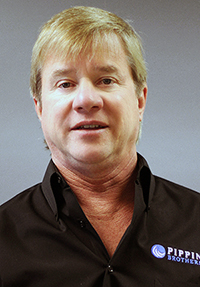
Mark Pippin
Like many contractors, I always thought I was in the business of selling HVAC equipment. At Pippin Brothers we began as a commercial plumbing and HVAC company. We were really good at that. We still are.
We eventually decided to get into the service business to take care of the warranties on our commercial jobs. Meanwhile, many of our customers began asking us to care of their homes as well. So we decided to get into the residential repair market. And we were pretty good at that as well.
However, it wasn’t until I sat in on a class being taught by Dominick Guarino, called ‘Tool Time,’ that I learned how HVAC systems aren’t performing properly all across the country. He said it was because most contractors thought only about the equipment and didn’t understand that we are not in the product business, but in the comfort business. He was talking about the ductwork and airflow. A light bulb went off in my head.
Comfort ‘ that was something that could totally make us different than everybody else. Our business, at the time, was mostly commercial. We were just getting into the residential plumbing and air conditioning markets. And we found that in our community, everything was driven on price and everyone was pretty much selling the same thing.
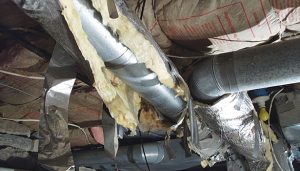
Every day Pippin technicians encounter a wide array of poorly installed ducts that negatively impact customer comfort, energy efficiency, safety, and health. Renovation is often the best solution to such problems.
During that meeting I learned not only how airflow and the duct system could change my universe, but I learned we could actually prove what we installed was not only installed correctly, but was delivering the comfort and efficiency we always talk about.
That simply blew me away. Then I realized another mind-blowing thing: Pippin Brothers had been installing equipment improperly. We knew we had a lot of duct systems in customers’ homes that weren’t working right, and it gave me a very bad feeling.
The good news was we could now fix it and then prove to the customer that it was right. None of our competitors would even know what we were talking about.
I became a Performance-Based Contractor’ that day, in my mind at least. I needed now to get my team on board and begin practicing what I was about to preach. The hardest part was explaining to my employees what we were planning to do and how important their role was in it.
A New Approach
Our focus changed to teaching our field teams about conversing to the customers. This performance approach is about being fair to the customer. We began sending our key people to residential system performance training and getting them certified. We went as far as bringing NCI into our company to train our entire team about static pressure testing and measurement. And we made this testing part of our overall service and maintenance plans.
Was it easy? Not by a long shot. I found that many technicians think once they’ve earned their air conditioning license they know everything there is to know. It is hard to get them to do something in addition to what they think they know.
But I stuck with it. Was persistent. They fought me at first. It took months before they bought in and began taking static pressure and temperature readings on every call.
One thing we did to force the issue was to require static pressure testing on every service call. Every invoice had to be stamped that this testing was done. I inspected every single invoice, and if that stamp wasn’t there, the tech had to explain to me why.
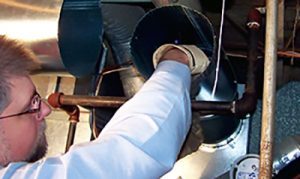
Understanding airflow and the duct system can change your world. Even better, when properly trained, you can actually prove that what you installed is delivering the comfort and efficiency the HVAC Industry always talks about.
I had to keep going over it, again and again. Eventually, they started catching on. We did the training in the winter. When summer came, it got very hot here ‘ the high 90s ‘ and the attics became unbearably hot. Guess what? That is when it was so much easier to show them.
In that kind of heat, after taking the four static pressure and temperature readings, they could see how we were getting anywhere from 10-20’F rises from return air grille to the unit. And sometimes the return air would be just two feet away from the unit and we have a 20’F rise. So, as it got hotter, it got easier to get the buy-in. They realized how terrible the situation was because now they could see and feel it due to the huge temperature swings.
Convincing Customers
The next hard part was approaching existing customers, explaining how updated training had taught us new things, and that we needed to test their systems. It wasn’t a free service. We charged for our testing and diagnosis. We were met with mixed emotions. Some customers didn’t want to pay again after we’d already installed their new system.
To meet their objections, we had to explain how our training taught us things we never knew before. We had a much deeper understanding of how the entire system, not just the equipment, works to deliver comfort and efficiency. We also explained that the dollars they already paid us were for simply changing out the equipment, not for making it function to its highest capability.
Not everyone was convinced. For those who agreed, the difference we were able to make was like night and day. Testing and diagnosing airflow through the duct systems went way beyond worrying about the refrigerant charge and making things look pretty.
The other obstacle we faced, and still face today, is that we were the only HVAC company doing this. Our competitors were telling customers that what we were doing was not necessary and that we were just looking for ways to make more money. But job after job that we completed using airflow diagnostics proved that we were delivering much more than just new equipment and that actually started catching on with our customers.
Pippin Brothers is by far more expensive than most of the competition, but we can and do prove that we deliver what we promise.
Ongoing Training is a MUST!
Though it took more than a year to get all our field teams on board, I knew it wasn’t enough. Everything I learned said that ongoing training was the ONLY way to make Performance-Based Contracting work. So I brought in NCI trainers to train our entire office.
It was amazing, but it was also like drinking from a fire hose! Today this training is broken down into steps ‘ first static pressure, then air flow. This is a much smarter way because it doesn’t overwhelm our guys and they retain more of what they learn.
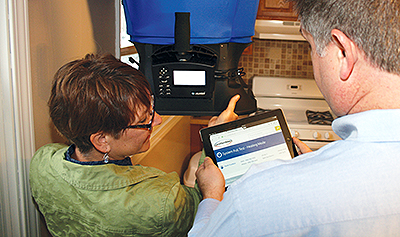
Sales people need to be professionals and that requires training. A lot of it. They need to be comfortable teaming up with customers ‘ not just selling them something.
I was motivated by the fact that we could make more money and deliver comfort like no one ever had before.
That is why we try to always be training our guys. Whether we do it in-house or bring professionals in, training is an ongoing process.
In addition to technical training, I needed to rethink some of our business processes here in the office. The old way of doing things just didn’t work with the high-performance approach. We needed training in creating the right processes to back up our field work. So I brought in consultants like Drew Cameron to work with our salespeople as well as our support teams.
As a result, our sales team now is required to do airflow measurements either with or in front of the customer. This is usually necessary to get customer buy-in because they can actually see what is happening in each room. Prior to using flow hoods, we couldn’t prove to them that airflow issues were real. Now we can.
Selling Performance
Our salespeople are professionals. We hire people who know how to sell and teach them about HVAC technology. They already understand the importance of building rapport and relationships with customers. Add in the time necessary to do static pressure and airflow tests, and our average sales call takes over 2 hours.
They talk to the customers, asking lots of questions about what rooms are comfortable and which ones aren’t. How high are their utility bills? What works and what doesn’t. In essence, they ask the customers what they want to buy and then their job is to package something up that the customer says they want.
“We sell an average of 15 to 20 duct renovation or air upgrade jobs each month at an average cost to the consumer between $3,000 and $5,000. That includes NO equipment. Just the ductwork.” — Mark Pippin
Each salesperson only does two or three sales calls per day. If we had them do more, we’d begin to see them cutting corners to get done faster, and then we’d miss opportunities.
Many of our sales leads come from the technicians doing maintenance and service work in customers’ homes. The techs see the potential issues and hand off those leads to the salesperson. Then the salesperson does more investigating.
Using this process, we sell an average of 15 to 20 duct renovation or air upgrade jobs each month at an average cost to the consumer between $3,000 and $5,000. That includes NO equipment. Just the ductwork.
Business Basics Counts
Like anything you do in your business, you need to understand your numbers. When it comes to costing jobs, you need to know your break-even point and you need to have profit margins built into what you charge. For Pippin Brothers, we use the same per-hour billable rate on duct renovations as we do on equipment changeouts.
Plus, ALL our overhead is figured into our hourly rate, as is our profit margins. So, it doesn’t matter if we are doing duct renovations or change outs, we are recouping what we need per man hour to make a solid and still fair profit.
To know these numbers means understanding your cash flow, being able to read your financial reports, and doing so often enough that you can make decisions and changes to keep your company moving forward. It really is business basics.
For those of you reading this who are new to the idea of Performance-Based Contracting’ or are in the middle of implementing it in your company, the best advice I have is for you to find a cheerleader ‘ someone who understands it, gets the ‘WOW’ factor, and wants to get the rest of the team on-board. They need to understand that without a performance approach, your company is actually cheating customers.
It requires commitment, patience, and an investment in tools and time.
If you do these things, it creates a true win-win-win for your customers, your company, and your team.
.
Mark Pippin is president of Pippin Brothers, Inc., a mechanical contracting firm that specializes in HVAC and plumbing services. The company began in 1978 in Lawton, OK. Mark holds a Master Plumbing license and actually grew up in the plumbiing business with his father. He first began learning about airflow after hearing a presentation conducted by the National Comfort Institute and realized the ‘secret sauce’ in HVAC is airflow. He jumped in head first and has never looked back.


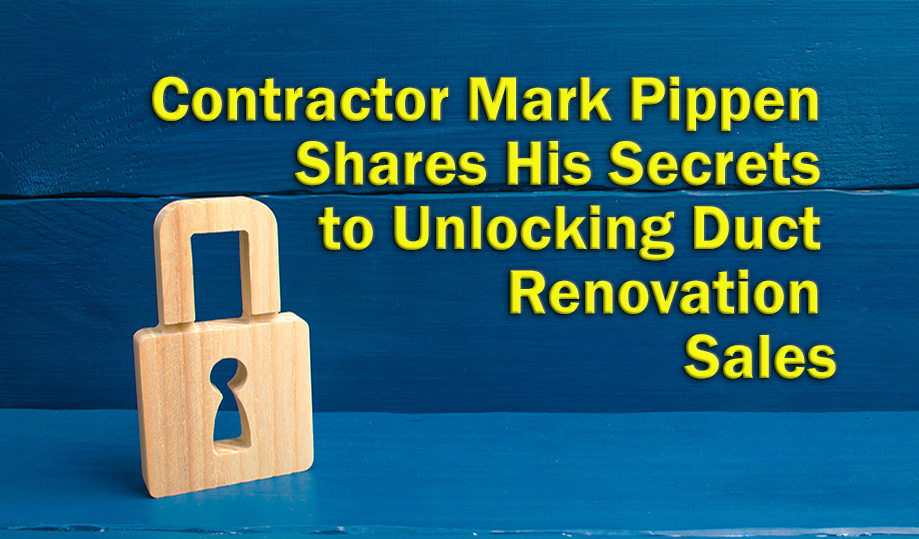
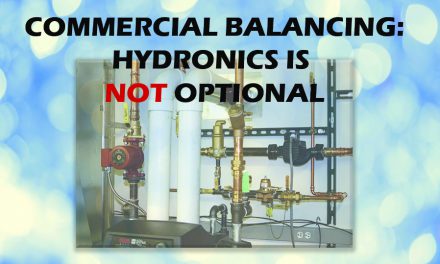

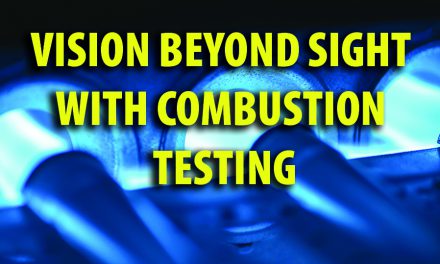
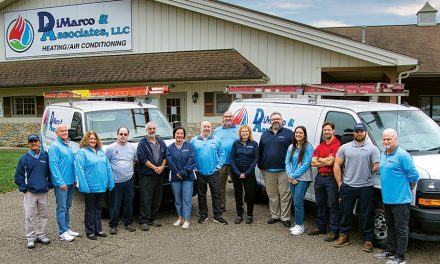





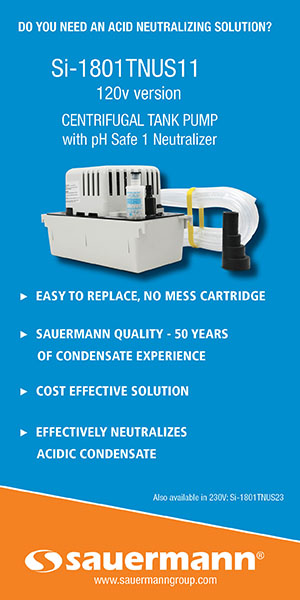
Recent Comments